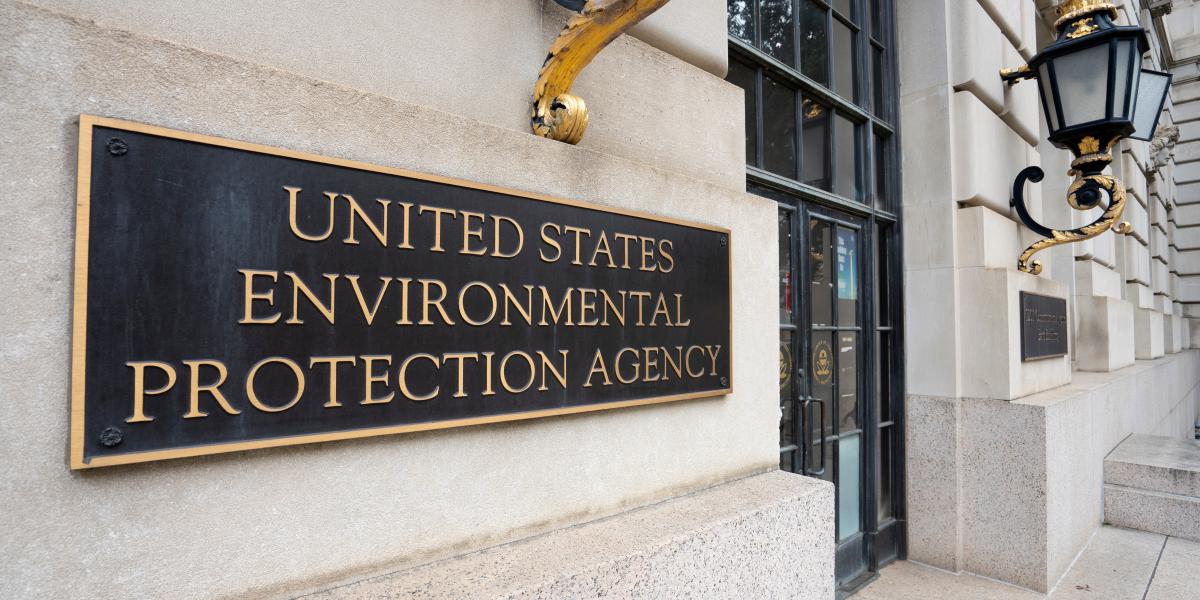You are here

(Editor’s Note: 3E is expanding news coverage to provide customers with insights into topics that enable a safer, more sustainable world by protecting people, safeguarding products, and helping businesses grow. Conference Chatter articles, produced by reporters, feature insights from subject matter experts and influencers and substantive discussions of emerging trends and developments with industry leaders and professionals).
U.S. Environmental Protection Agency (EPA) officials are navigating budget challenges for the current and coming fiscal year, which will likely force the agency to suspend hiring and pause key programs, officials told 3E.
As various agencies await Congressional approval for their FY 2025 budget requests, EPA leaders are advising their staff to work efficiently and make the best of sometimes limited resources allocated in their 2024 budget and an infrastructure in need of various upgrades and enhancements.
“We may need to slow or pause the creation of additional initiatives for standardized, sector-based approaches that speed up reviews and make them more consistent, and, depending on the final budget for the New Chemicals Division, we may need to also pause key programs such as revamping the ‘Sustainable Futures’ training program,” said Shari Barash, director of the EPA’s New Chemicals Division (NCD) of Office of Pollution Prevention and Toxics (OPPT).
Barash said her team’s cyber infrastructure needs to be modernized to comply with the Federal Information Security Modernization Act (FISMA), a law that empowers the Department of Homeland Security (DHS) and the Cybersecurity and Infrastructure Security Agency (CISA) to ensure federal agencies keep their information secure.
That’s especially important when dealing with confidential business information (CBI) collected through the EPA’s Chemical Information System (CIS), Barash said.
“The software and hardware are getting old and they break down a lot. So, you can imagine what that does in terms of the pace of our review. You do all your work behind a confidential firewall, and then you can't access it when the system is down,” Barash said. “That's where the budget impact is right now. We're getting more stabilized. But to move us to a cloud-protected system for the confidential business information, that's the thing that we want to work toward.”
Assigning Priorities
In addition to the hiring pause, the Sustainable Futures program, a voluntary risk-screening model that the EPA uses to evaluate new chemicals before they enter the market, would likely be put on hold, Barash said.
“We don't have the resources to both hire a person to run the program and then also pay for the contractor support needed to make the necessary updates to re-launch the program,” Barash said. “But that's something that's high on our priority list. So, if there are some additional funds that come to us, that would be one of the top things that gets done.”
The EPA was allocated nearly $12.1 billion for FY 2024, a 19% increase from FY 2023’s enacted budget. However, the EPA’s FY 2025 budget request from the Biden Administration is approximately 9% lower than FY 2024, checking in at $11 billion.
Execution and implementation of FY 2025 begins on 1 October 2024 and ends on 30 September 2025, according to the Congressional Research Service.
EPA Assistant Administrator for the Office of Chemical Safety and Pollution Prevention (OCSPP) Michal Freedhoff told 3E after her testimony in front of the U.S. Senate’s Environmental and Public Works Committee (EPW) on 24 January 2024 that the Biden Administration’s budget request is what EPA believes is needed.
“The [Biden Administration’s] budget request is what we think it takes to implement the law, the way Congress expected us to implement the law,” Freedhoff said. “The House budget is the pre-2016 budget for the office, so there are pretty stark differences there.”
Mark Hartman, EPA’s deputy director of OPPT, said chemical prioritization under the Toxic Substances Control Act (TSCA) and other assessments that concern the upstream origin of a chemical substance are the most implicated by budget constraints.
The EPA will do everything it can to get its chemical review portfolio completed, Hartman added. “We’ll get these risk evaluations done, the risk management rules — both proposed and finalized. Our long-term vision is to start breaking this down into more bite-sized chunks. Over time, that will help us not have these crunches where we have so much work to do. It'll take us some time to catch up.”
Doing More With Less
Despite the lower budget request for FY 2025, the agency continues to make the best of the resources that are available to it.
Barash cited the agency’s efforts to increase speed and consistency and highlighted the forthcoming final rule for TSCA amendment incorporation coming in the spring or summer to increase the quality of their submitted assessments.
Among other expected improvements, Barash said NCD will look to implement the following initiatives or objectives to enhance their efficacy:
- Tiger teams for EVs, semiconductors, batteries
- Improve health risk assessment reports
- Improve workflow and tracking
NCD has added 20 new employees since July 2022 and developed comprehensive, discipline-specific training and mentorship programs, while updating standard operating procedures. The division completed 472 risk assessments in 2023.
Disclaimer: Some quotes have been edited, clarified, and contextualized for clarity. These adjustments were made through our own editorial process, as well as in consultation with the EPA, for accuracy and completeness.
------------
About the author: Stefan Modrich is a Washington, D.C.-based reporter for 3E. He covers the latest developments in environmental health and safety policy and regulation. Modrich previously wrote for S&P Global Market Intelligence, The Arizona Republic, and the Chicago Tribune. He is an alumnus of Arizona State University and the University of Zagreb.

 Top
Top